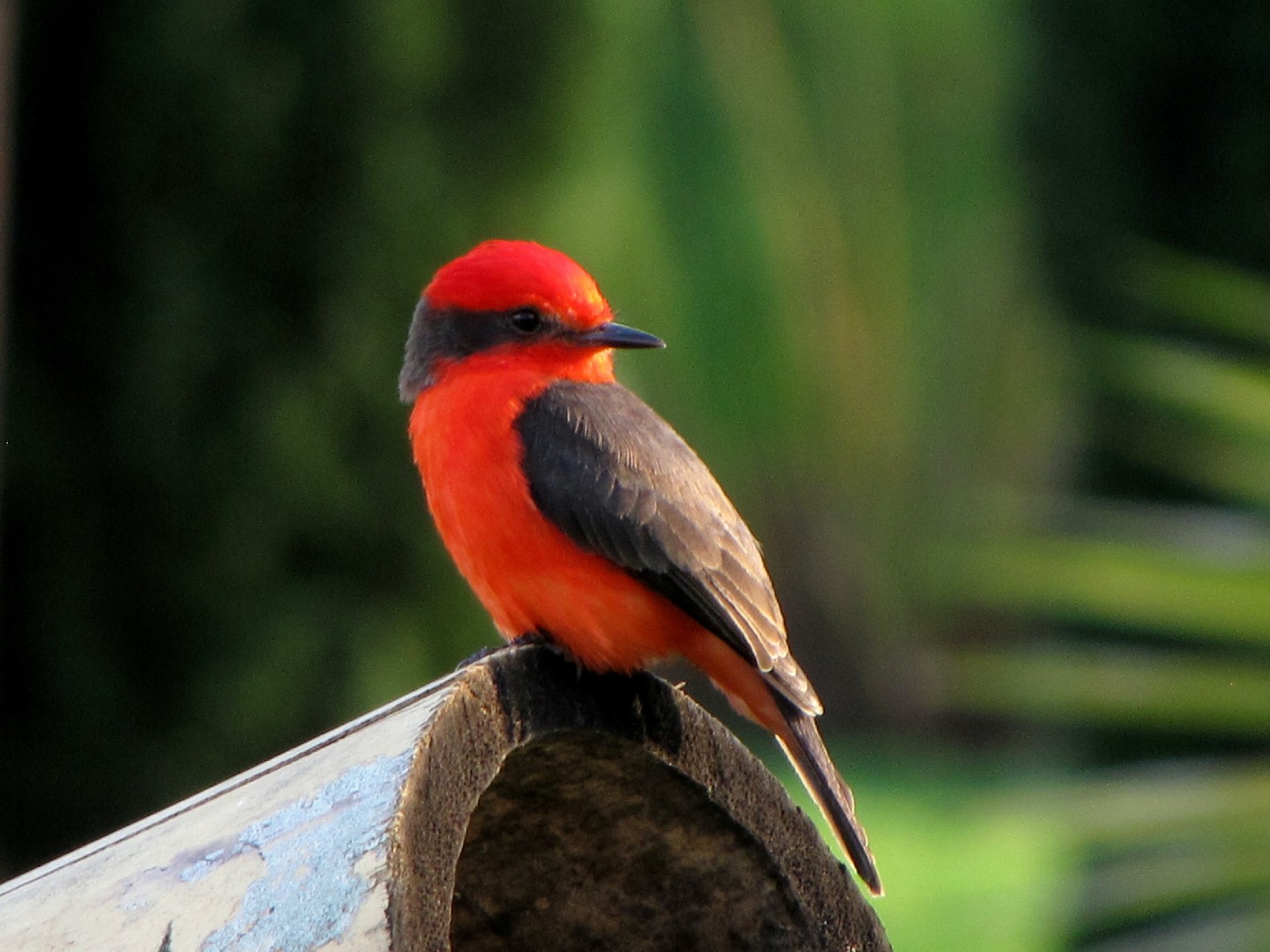Vermilion Flycatcher
A species of Vermilion Flycatchers Scientific name : Pyrocephalus rubinus Genus : Vermilion Flycatchers
Vermilion Flycatcher, A species of Vermilion Flycatchers
Botanical name: Pyrocephalus rubinus
Genus: Vermilion Flycatchers
Content
Description People often ask General Info
 Photo By Alejandro Bayer Tamayo , used under CC-BY-SA-2.0 /Cropped and compressed from original
Photo By Alejandro Bayer Tamayo , used under CC-BY-SA-2.0 /Cropped and compressed from original Description
The vermilion Flycatcher is a bright species of bird found in many open habitats and rarely seen on the ground. These birds sit on a perch until they're ready to take wing and feed on a variety of insects midflight. The vermilion Flycatcher is not a threatened species, but urbanization that eliminates some of thier natural breeding grounds could affect populations.
Size
15 - 17 cm
Life Expectancy
5 years
Nest Placement
Tree
Clutch Size
2 - 4 eggs
Incubation Period
1 - 2 broods
Number of Broods
13 - 15 days
Nestling Period
14 - 16 days
Feeding Habits
Vermilion Flycatcher's diet consists primarily of flying insects, which they catch mid-flight from perches, typically within 10 feet of the ground. They employ sudden forays or looping swoops back to the same perch, and subdue larger insects like grasshoppers, butterflies, honeybees, beetles, and crickets by whacking them against the perch before consumption.
Habitat
Vermilion Flycatcher predominantly inhabits open and semi-open landscapes across the American Southwest and extends through Central and South America. Favoured environments include arid scrublands, savannas, ranches, and particularly stream corridors. These birds thrive around water sources where willow, sycamore, cottonwood, and mesquite trees provide essential habitat. Their adaptability allows them to occupy a range of altitudes, from tropical lowlands to elevations as high as 10,000 feet, often frequenting parks, farmlands, deserts, and canyon mouths.
Nest Behavior
Vermilion Flycatcher builds nests along stream corridors, laying eggs in a well-camouflaged cup. Both parents participate in caring for eggs and young, with timing and patterns specific to the species.
Nest Characteristics
Vermilion Flycatcher's nest is a shallow cup made from twigs, grass, and cocoons, bound with spiderweb. Situated 8-20 feet high in trees beside streams, often camouflaged with lichen.
Dite type
Insectivorous
General Info
Feeding Habits
Bird food type
Bird Feeder Type

Platform
Behavior
Vermilion Flycatcher showcases distinctive behaviors, eagerly defending its territory with a vibrant display of its tail and crest. Its courtship ritual is particularly notable, as the male ascends dramatically before interspersing glides and flutters, accompanied by a melodic song, to woo the female. Once courtship succeeds, the pair collaborates in nest selection and preparation, with the male often seen provisioning the female with insects. Monogamy is usual for vermilion Flycatcher, though occasional extra-pair copulations occur. Parenting duties are shared post-hatching, with both partners nurturing the chicks. Outside of the breeding season, vermilion Flycatcher leads a mainly solitary life, apart from winter gatherings of males.
Species Status
Not globally threatened.
Scientific Classification
Phylum
Chordates Class
Birds Order
Perching birds Family
Tyrant flycatchers Genus
Vermilion Flycatchers Species
Vermilion Flycatcher